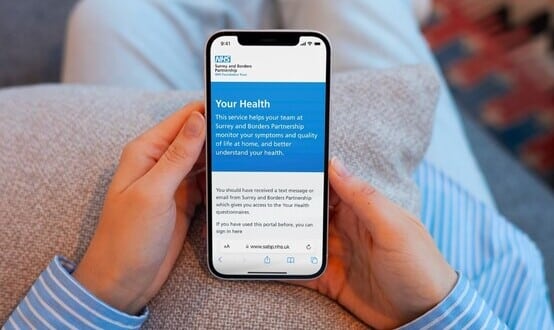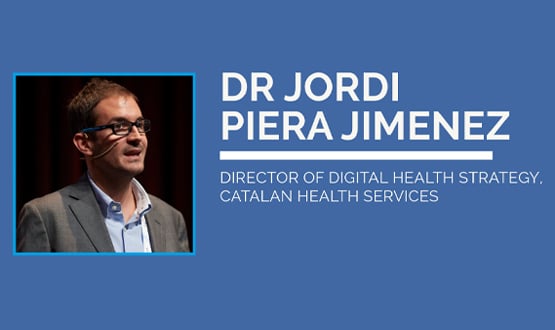Open source enlightenment needed to end ‘dark ages’ of health IT
- 11 January 2017

Your article – "Whatever happened to Open Source in 2016?" highlights the brief vogue that open source recently enjoyed in the NHS – 2014-15 – and now seems to have lost. It raises some good questions and important issues, though I sense some broader perspective may be worth adding here.
It’s worth remembering that healthcare is a well-established science – the first medical school established in the 9th century. While information technology is still a young science – the first MSc in software engineering dates from 1979.
We know that the relatively risk averse culture of healthcare differs very significantly from the frenetic pace of innovation we see in the software world.
Health IT success the interplay of people, process and technology
While UK Primary Care computing has been a world leader in digitisation the more complex hospital sector has been much slower to computerize. The key factor being the complex interplay between the people, process and technology factors involved.
If we look at the very limited results that the NHS National Programme for IT (NPfIT) over a 10-year period (2004-2014) we can see that healthcare IT is really hard to do at scale. So the changes that are needed in this field to really bring the broad healthcare sector into the information age are happening around us, but will take time to pan out.
With regards to the important role of open source in healthcare, you will know that I’ve been championing this cause for some time. Your readers may be interested in this related piece from 2010.
Health IT market part of the problem
After a spell as a clinical leader with NPfIT I was among those who concluded that the health IT market was at least part of the problem. The subsequent push I and my colleagues in Leeds made to leverage open source paid real dividends and helped us to achieve both a Leeds Clinical Portal (also known as PPM+) hospital-wide as well as the Leeds Care Record across the city.
By being willing and able to share our efforts from within the hospital across the city (not constrained by software license issues etc.) we were able to achieve better clinical buy-in and technical integration. These developments took place in 2010-2014, in the lead up to the NHS England open source push you mention.
Bravery of NHS England open source leadership
The leadership then shown by Beverly Bryant, Peter Coates and others at NHS England to promote the role of open source in the NHS was brave and they remain ahead of their time.
Their thought leadership was, and remains, years ahead of many of their peers and I have no doubt that when the history of this science is being written up later, their efforts will be remembered.
Politely shifting a multi-billion pound industry
Bearing in mind they are trying to politely shift a multibillion pound industry in the right direction, such change was always going to take time. The thrust of your article is that a bubble of expectation that built up around open source in 2014/2015 has burst and national focus moved on. No argument here.
As I’ve written about for some time, open source is simply “part of the recipe”. And I believe the broad “open platform” that healthcare still needs requires a blend of elements including the right combination of both open standards based architecture and open source software.
The potential that open source has in healthcare may be best summarised by these three features:
. Unconstrained innovation – ideas and ambitions can be shared by folk who are oceans apart
. Transparent credibility -allowing immediate detailed scrutiny immediately boosts credibility
. Decentralized control – amendments and improvement can come from the bottom up
We know that open source software and related platforms are positively disrupting whole industries with tools from Android to Redis to WordPress, to name just three.
As one example, look at what Walmart did with its Walmart.com platform in the last few months… they open sourced it to the world.
The reality is that the open source “platform” technology that healthcare requires was not available to the market in 2014/2015. We are still in the early days of making that available.
Disruption through Ripple
Our attempts within Leeds to move in that direction produced benefits and results and have transformed care in Leeds, yet the platform we built there was difficult to reuse elsewhere. This gave rise to the related Ripple OS initiative, funded by Tech Fund, which evolved out of Leeds and continues the push to positively disrupt the market.
Ripple now provides an open source user interface framework, integration technology and an openEHR based Clinical Data Repository, to support such diverse needs as a Person Held Record, Electronic Patient Record and Integrated Digital Care Records.
We’ve also established a Ripple Foundation Community Interest Company to support both clinical innovators who understand this push and want to pioneer in this direction, as well as support a growing number of commercial organisations who want to service this need.
Of course Ripple effort is only one of a range of efforts, Endeavour Health being another, and part of a wider push to open source platform technology and tools, to positively disrupt the healthcare market to survive and thrive in the years ahead.
We’ll look back on the ‘dark ages’ of health IT
When I’ve spoken publicly in the past, I’ve said, in my humble opinion, that folk will look back at the current state of health IT, with its acknowledged poor usability, difficult integration and interoperability and generally poor fit with patient-centred care, as the ‘dark ages’ of health IT.
If one thinks of the era of alchemy before the advent of open scientific methodologies, that helps to explain the dark art of using proprietary information systems in healthcare, which is the antithesis to the “publish or perish” advancement of medical science that I was educated in.
Change to open source platform will take time
I know this open source platform change will not happen overnight, it will take time, years, perhaps decades even to succeed, yet this change can and will transform healthcare forever.
So I think it’s important that readers can put the NHS focus on Open Source over 2014-15 in a broader, longer context.
Is it an easy road to move healthcare forward? No. Then again that’s what leadership is about – taking the road less traveled. The latest NHS England senior team may have history and an affiliation for the more established players in the US/UK market for now, yet as you suggest there are wider, more global market issues playing out here.
It appears smart and sensible to some of us that a percentage of available funding should be available to support an open option… the year is now 2017 and these may yet again be revolutionary times.




